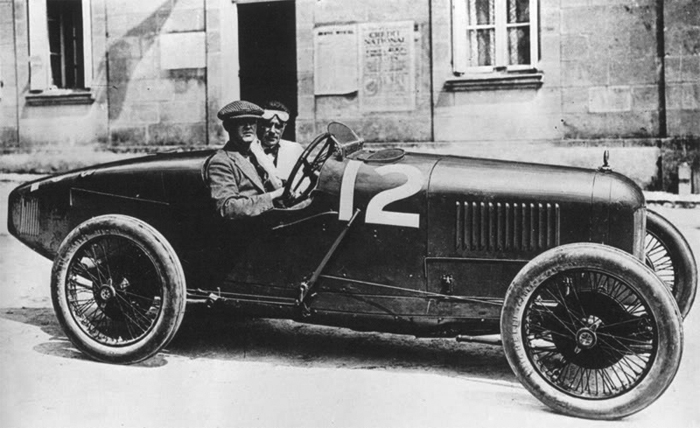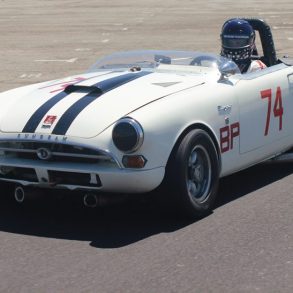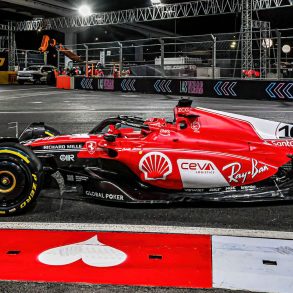Sunbeam GP (1923)
Car: Sunbeam GP / Engine: 4 Cylinder In-Line / Maker: Sunbeam / Bore X Stroke: 67 X 94 mm / Year: 1923 / Capacity: 1,988 cc / Class: Grand Prix / Power: 102.1 bhp at 5,000 rpm / Wheelbase: 2,489 mm / Track: 1245 mm Front & Rear/ Top Speed: 108 mph / Notes: 3-Speed Manual Transmission
Established in 1899 and based in Wolverhampton UK, Sunbeam was known for its sturdy but unexciting line of cars. Things changed in 1909 when Louis Hervé Coatalen became chief engineer. Though Coatalen was French-born he had been employed by various car manufacturers in England since the turn of the century. During WWI he worked on British aircraft engines. Only one year after his arrival Coatalen created the 4.2 liter streamlined Brooklands racer dubbed the “Nautilus”. He drove it himself to a number of victories at the famous track. In 1913, Coatalen got his hands on one of the legendary DOHC Grand Prix Peugeots and in 1914 Sunbeam produced a race car very similar to the famous Peugeot. The first DOHC six was introduced by Sunbeam at Indy in 1916 and finished third. During the war Sunbeam produced aero engines based on their 1914 DOHC design.
After the war Sunbeam suffered from financial problems, partly from a slump in the motor industry, and partly from non-payment of some of the war contract work. Tragedy struck in 1919 when Joseph Christiaens, Head of the Experimental Department, was killed while road testing one of the company’s racing cars when a horse and cart came out of a side street causing him to swerve into a wall. His mechanic, Frank Bill, was so badly injured that he needed crutches for the rest of his life. As a result of his injuries the company gave him a permanent job as storekeeper. Financial problems continued to dog the company compelling them to merge with Darracq and British Talbot in 1920 to form the S.T.D. group with Coatalen in overall charge of engineering and brought in Ernest Henry who had worked previously for Peugeot and Ballot, to be in charge of engine design.
In the first decade of Grand Prix racing a British car has never won a race so in 1923 at the French Grand Prix at Tours Sunbeam was not considered one of the favorites. The Touraine circuit used that year consisted of fourteen winding, dusty and rather dangerous miles. The regulations were quite simple with limit of two litres, and a minimum weight of 630 kilos. The cream of international racing were represented—Sunbeam, Fiat, Deluge, Bugatti, RollandPilain and Voisin. the Fiats driven by Bordini, Salamano and Giaecone, were the favorites having won last year. Of course that may have been before Coatalen had lured Vincent Bertarione over from Fiat to replace the departed Ernerst Henry.
During the practice period most of the ears were found to be uncomfortably fast and rather tricky to handle on the highly cambered, narrow circuit. To make matters worse the edges of the road began to crumble and passing became a Very hazardous performance. The Fiat of Bordino put in the fastest practice lap at 83.6 mph Segrave lapped at 81 mph
The night before the race found Tours crowded with visitors with motor-ears parked everywhere. Early in the morning a never-ending. procession of cars made its way to the tribunes. On race day the sun shone bright with a slight breeze to ruffle the tricolor flags that bedecked the grandstand. There were 17 cars that lined up that day in pairs with three British and three Italian cars challenging the might of France. M. Rene de Knyff, President of the A.C.F., dropped the starting flag and the race was on.
Since the 1922 season despatch of competitors in pairs was abandoned and Strasbourg spectators were the first to witness a mass start Grand Prix. Rene Thomas in a Delage who was in the front row went into the lead but was soon passed by Bordini’s Fiat.The race was fast and furious and the tricky condition of the course made the drivers’ job all the more difficult. Salamano slid across the road at Semblancay and was narrowly missed by Friedrich’s Bugatti, arriving round the corner. After the first lap it was Bordini in the lead followed by the Sunbeam of Guinness. By the fifth lap the first two positions remained unchanged but now Fiats occupied third and fourth. Disaster struck the lead Fiat which came to a stop with a hole in it’s crankcase. A British Sunbeam was now in the lead.
















